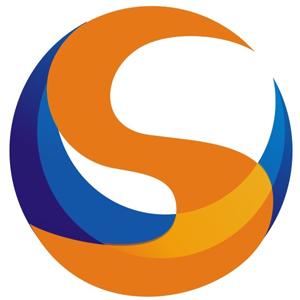Outline
- Introduction
- Zhaga Lighting Control Advantages and Trends
- Flexibility and Interoperability
- Smart Lighting Momentum
- Future Scalability
- NEMA Lighting Control Advantages and Trends
- Established Market Acceptance
- Simplicity and Low Cost
- Strong Compatibility
- Future Trend Predictions
- Smart and Sustainable Development
- Technology Fusion and Transition
- The Bottom Line
As South America’s urban infrastructure develops rapidly, the need for intelligent lighting control systems is rising. Both Zhaga and NEMA standards have gained prominence in the market, catering to the growing demands for energy efficiency, reliability, and smart integration in street and outdoor lighting.
Zhaga offers advanced IoT capabilities, positioning itself as a forward-thinking solution for smart cities, while NEMA’s traditional framework and cost-efficiency appeal to more conventional applications. Choosing the right lighting control technology is pivotal to meeting both current needs and future scalability.
This article will examine the distinct advantages and challenges of Zhaga and NEMA, exploring their suitability in South America’s evolving landscape, and offer insights into which system may hold the future for this promising market.

Zhaga Lighting Control Advantages and Trends
South America’s lighting market is witnessing a surge in smart city initiatives. Zhaga-based lighting controls, in this backdrop, are gaining popularity for their adaptability and integration capabilities.
Here’s a closer look at Zhaga’s distinctive advantages in lighting control technology.

Flexibility and Interoperability
Zhaga standards enable multi-vendor compatibility, allowing products to work seamlessly across various systems and manufacturers. This open, modular approach ensures that cities can adapt or upgrade lighting components without full replacements, significantly reducing costs and waste.
For example, Zhaga Book 18 establishes standardized interfaces for LED lighting that simplify system upgrades by ensuring compatibility with future products. This makes Zhaga solutions particularly advantageous for large-scale, modular infrastructure projects.
Smart Lighting Momentum
Zhaga systems integrate easily with IoT, facilitating real-time data transfer and remote management. This connectivity is critical for smart city development, as it allows for intelligent, automated lighting adjustments that enhance safety and save energy.
By integrating DALI (Digital Addressable Lighting Interface) with Zhaga sockets, these systems support automated dimming and maintenance notifications, key to efficient urban lighting management.
Future Scalability
The Zhaga Alliance’s ongoing updates ensure that products remain compatible with advancing technologies, offering long-term adaptability.
This future-proofing means that Zhaga-compatible systems can integrate new sensors or communication modules as they become available, minimizing future replacement costs and supporting sustainable growth across South American cities.
NEMA Lighting Control Advantages and Trends
Widely adopted and often favoured NEMA lighting controls are known for their compatibility and cost-effectiveness, making them a trusted option for various infrastructure projects across the South American market. Here is their detailed overview.

Established Market Acceptance
NEMA standards have been well-established in South America, benefiting from a long-standing presence and consistent functionality. The widespread use of NEMA’s high-voltage AC sockets in outdoor and roadway lighting makes it an industry staple, allowing municipal and private-sector projects to deploy reliable, standardized lighting systems.
This familiarity and proven performance have led to broad support from local authorities and industry players, who often prioritize known technologies that minimize transition costs and integration challenges.
Simplicity and Low Cost
NEMA lighting systems are designed for simplicity, making them highly suitable for cost-sensitive projects without sacrificing durability. Their plug-and-play nature further facilitates quick installations and low maintenance, which is particularly beneficial in high-volume applications like public lighting.
NEMA controls continue to be a preferred choice where initial cost efficiency and minimal operational complexity are key project considerations.
Strong Compatibility
Compatibility is one of NEMA’s standout features, as the standardized socket design allows for seamless integration with existing lighting infrastructure.
NEMA sockets offer a standardized interface that supports both analog (e.g., 0-10V dimming) and digital communication protocols, making them versatile across different lighting technologies.
This broad compatibility enhances system flexibility, enabling straightforward upgrades or component swaps without needing significant adjustments to the lighting fixtures or control infrastructure.
Future Trend Predictions
As South American cities advance their smart city initiatives, future trends in lighting controls indicate a growing interest in Zhaga’s capabilities alongside NEMA’s legacy. Where sustainable priorities drive markets toward Zhaga standards, the likelihood of Zhaga and NEMA coexistence as technology blends.

Smart and Sustainable Development
Smart city goals in South America increasingly emphasize sustainability, making Zhaga standards appealing due to their future-proof, modular designs. Zhaga standards facilitate the integration of IoT-enabled lighting control sensors, helping cities track and reduce energy use and enabling components to be replaced or upgraded without costly replacements.
This support for the circular economy—through enhanced repairability, serviceability, and recyclability—aligns well with current legislative trends favouring greener, longer-lasting infrastructure solutions, positioning Zhaga as a likely leader in sustainable city lighting systems.
Technology Fusion and Transition
While NEMA remains foundational due to its widespread adoption and compatibility with legacy systems, many experts anticipate a gradual fusion of NEMA and Zhaga systems, especially as South America’s lighting infrastructure modernizes.
This coexistence would enable a smoother transition for municipalities, leveraging NEMA’s extensive installation base while introducing Zhaga’s IoT flexibility.
By adapting their infrastructure to accommodate Zhaga standards, cities could seamlessly shift to smart systems over time, maximizing cost-effectiveness and minimizing disruption, as both technologies can meet complementary needs across varied projects.
The Bottom Line
While NEMA offers immediate advantages through its compatibility and cost-effectiveness, Zhaga’s modular, IoT-enabled solutions appear better suited for the future demands of South America’s smart and sustainable cities. For cities looking to implement or transition between these systems, Chi-Swear stands out as a reliable supplier, providing high-quality, compatible Zhaga and NEMA lighting controls to meet diverse infrastructure needs.






